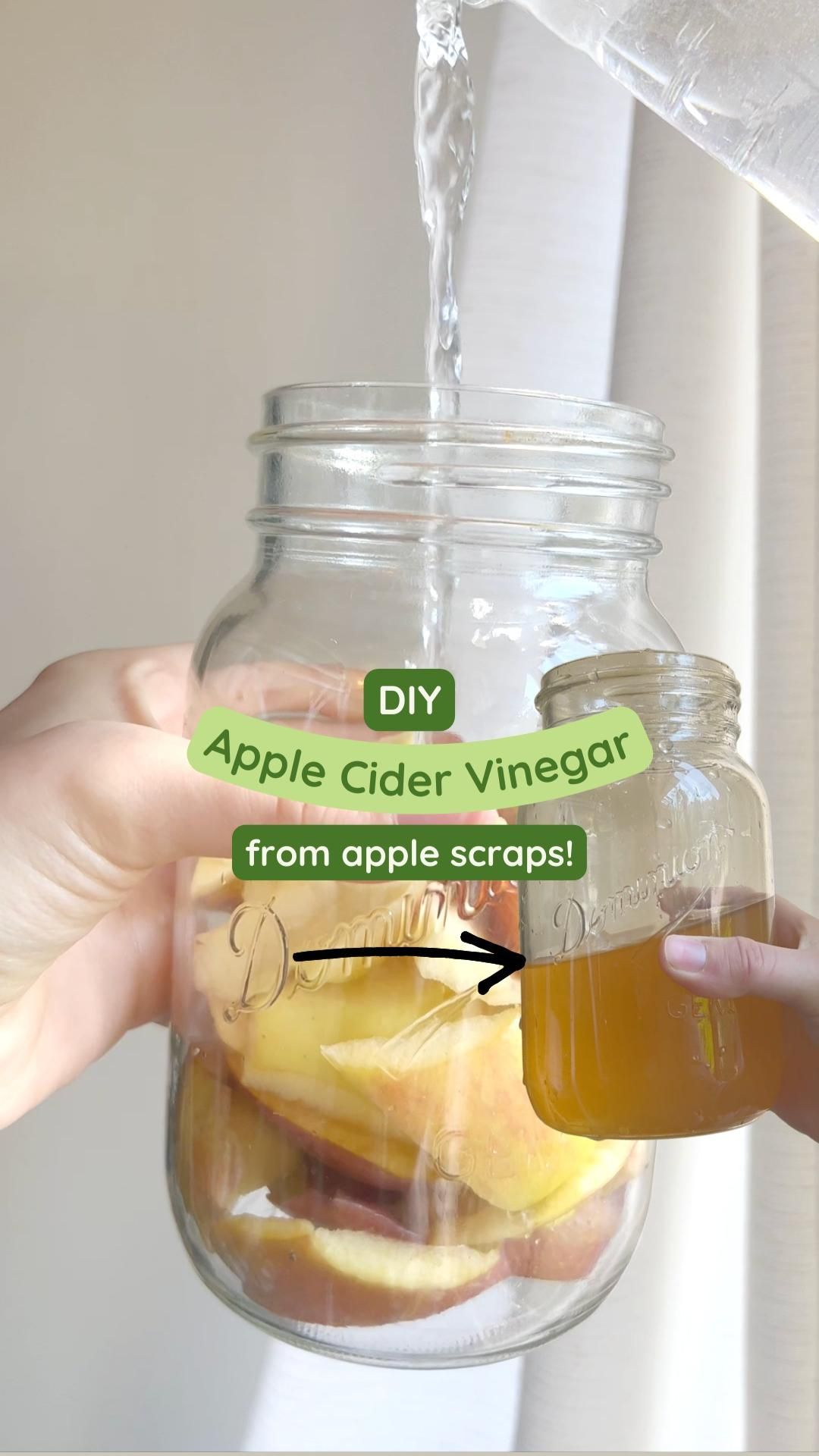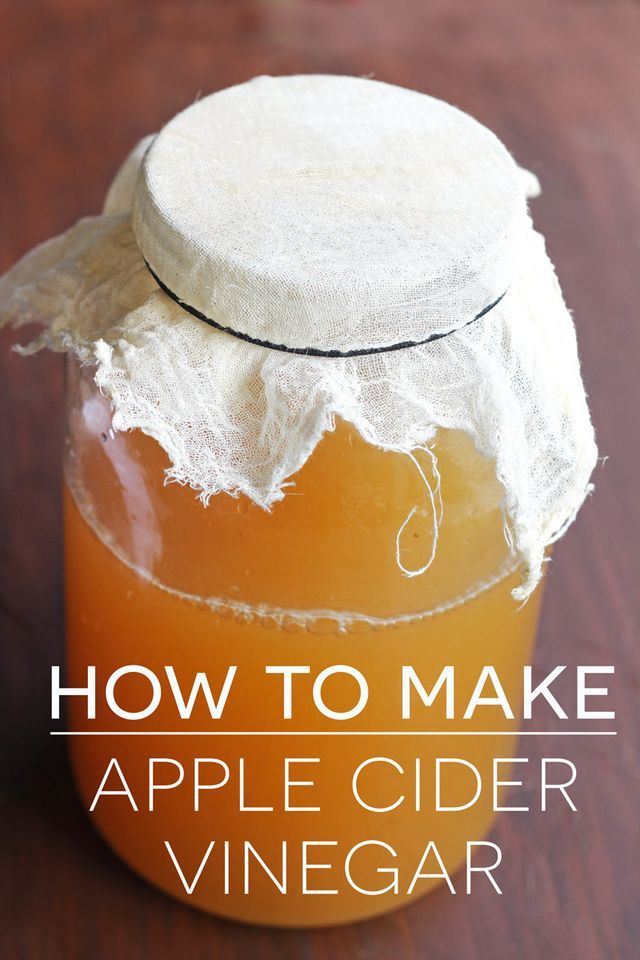If you've ever enjoyed the tangy taste of apple cider vinegar (ACV) in your salad dressings or as a health tonic, you might be surprised to learn how easy it is to make at home! Crafting your own ACV allows you to control the ingredients and tailor it to your taste preferences. Plus, there’s something incredibly satisfying about transforming simple apples into a versatile kitchen staple. In this guide, we'll walk you through the process, ensuring that you can whip up your own batch of this fermented delight!
Ingredients You'll Need

To get started on your homemade apple cider vinegar journey, you'll need just a few simple ingredients. Here’s a breakdown of what you’ll require:
- Apples: About 6-10 organic apples (you can use whole apples, cores, or scraps). Organic is preferred because it ensures no harmful pesticides are present.
- Water: Filtered water works best. You’ll need enough to cover the apples completely, typically around 4-5 cups.
- Sugar: 1 cup of sugar helps kickstart the fermentation process. You can use white sugar, brown sugar, or honey, depending on your taste.
- Starter culture (optional): If you want to speed up fermentation, you can add a splash of unfiltered apple cider vinegar (with the mother) or a bit of store-bought vinegar.
Here's a quick table summarizing the ingredients:
| Ingredient | Quantity |
|---|---|
| Organic Apples | 6-10 |
| Filtered Water | 4-5 cups |
| Sugar | 1 cup |
| Starter Culture (optional) | 1-2 tablespoons |
Gather these ingredients, and you’re ready to start your apple cider vinegar-making adventure!
Also Read This: How the States Got Their Shapes: Watch the Documentary on Dailymotion
Step-by-Step Guide to Making Apple Cider Vinegar

Making apple cider vinegar at home is a rewarding process that can bring a burst of flavor to your kitchen. Here’s a simple guide to help you create your own batch. Ready? Let’s go!
- Gather Your Ingredients: You’ll need:
- Organic apples (about 6-10, depending on size)
- Water (filtered is best)
- Sugar (1 cup for every quart of water)
- A clean, wide-mouthed glass jar
Also Read This: How Dailymotion Streams Videos and Explores the Streaming Process
Tips for Success

Making apple cider vinegar is easy, but a few tips can help ensure your batch turns out perfectly. Here’s what you should keep in mind:
- Use Organic Apples: Non-organic apples may have pesticides that can interfere with fermentation. Always opt for organic to ensure purity.
- Monitor Temperature: The ideal fermentation temperature is around 60-80°F (15-27°C). Too cold or too hot can slow down or halt the process.
- Be Patient: Fermentation takes time, so resist the urge to rush it. The longer it ferments, the more complex the flavors will become.
- Keep it Clean: Sterilize your jars and utensils to prevent unwanted bacteria from spoiling your vinegar.
- Experiment with Flavors: Feel free to add herbs, spices, or even other fruits during the fermentation process for unique flavor combinations.
- Taste Test: Regularly taste your vinegar during the second fermentation to achieve the perfect balance of tartness and flavor.
By following these tips, you're well on your way to making delicious homemade apple cider vinegar that can elevate your culinary creations!
Also Read This: How to Add Subtitles to Dailymotion Videos
Common Mistakes to Avoid
Making apple cider vinegar at home is a fun and rewarding process, but it’s easy to trip up along the way. Here are some common mistakes to watch out for:
- Using Store-bought Juice: While it may be tempting to use bottled apple juice, your best bet is to use fresh, organic apples or organic apple juice. Store-bought options often contain preservatives that can hinder fermentation.
- Not Using a Clean Fermentation Vessel: Sanitation is key! Always use a clean glass or food-grade plastic container. Bacteria from unclean vessels can spoil your vinegar.
- Skipping the Airflow: Your vinegar needs air to ferment properly. Cover your jar with a cloth or coffee filter instead of a tight lid to allow airflow while keeping out insects.
- Not Being Patient: Fermentation takes time. Don’t rush the process; it can take anywhere from a few weeks to a few months depending on your environment and the apples used.
- Too Much Sugar: Balance is key! While sugar helps fermentation, adding too much can lead to overly sweet vinegar. Aim for a balanced ratio; a cup of sugar per gallon of water is a good starting point.
Also Read This: How to Stop Dailymotion Pop-Ups
Storage and Usage Suggestions
Once you’ve crafted your homemade apple cider vinegar, proper storage and usage are essential to maximize its benefits.
Storage: Store your apple cider vinegar in a cool, dark place. A cupboard or pantry works great. Here are some tips:
- Use Glass Containers: Glass is the best option for storing vinegar as it doesn’t react with the acid.
- Airtight Seal: Ensure your container has a good seal to prevent contamination while allowing for some air exchange.
- Label and Date: Always label your containers with the date of bottling. Homemade vinegar can last indefinitely, but it’s good practice to keep track.
Usage: There are countless ways to enjoy your homemade apple cider vinegar:
- In Salad Dressings: Whisk it with olive oil, honey, and mustard for a zesty dressing.
- As a Natural Detox: Mix a tablespoon in a glass of water for a daily detox drink.
- In Cooking: Use it to enhance flavors in marinades, sauces, and even baking.
Experiment and find the best ways that suit your taste! Enjoy your homemade creation!
How to Make Apple Cider Vinegar at Home
Apple cider vinegar (ACV) is a versatile ingredient, known for its health benefits and culinary uses. Making it at home is a simple process that requires minimal ingredients and equipment. Here’s a step-by-step guide to creating your own apple cider vinegar.
Ingredients Needed
- Fresh apples or apple scraps (peels and cores)
- Sugar (1 cup per quart of water)
- Water (preferably filtered)
- An airtight container (like a glass jar)
Equipment Required
- Glass jar or fermentation vessel
- Cheesecloth or coffee filter
- Rubber band or string
Step-by-Step Process
- Prepare the Apples: If using whole apples, chop them into small pieces. If using scraps, ensure they’re clean.
- Mix with Sugar Water: Dissolve sugar in water and pour over the apples in the jar, ensuring they are fully submerged.
- Cover and Ferment: Cover the jar with cheesecloth and secure it with a rubber band. Place it in a dark, warm area for 3-4 weeks, stirring occasionally.
- Strain the Mixture: After fermentation, strain out the solids using a fine mesh strainer.
- Second Fermentation: Allow the liquid to ferment for another 3-4 weeks until it reaches the desired acidity.
Tips for Success
| Tip | Description |
|---|---|
| Use Organic Apples | This ensures no harmful chemicals affect fermentation. |
| Monitor Temperature | A consistent warm temperature aids in fermentation. |
| Taste Regularly | Check the vinegar every week to assess acidity. |
Making apple cider vinegar at home is a rewarding and straightforward process. With just a few ingredients and some patience, you can create a flavorful, healthy vinegar that enhances your cooking and wellness routines.
 admin
admin








